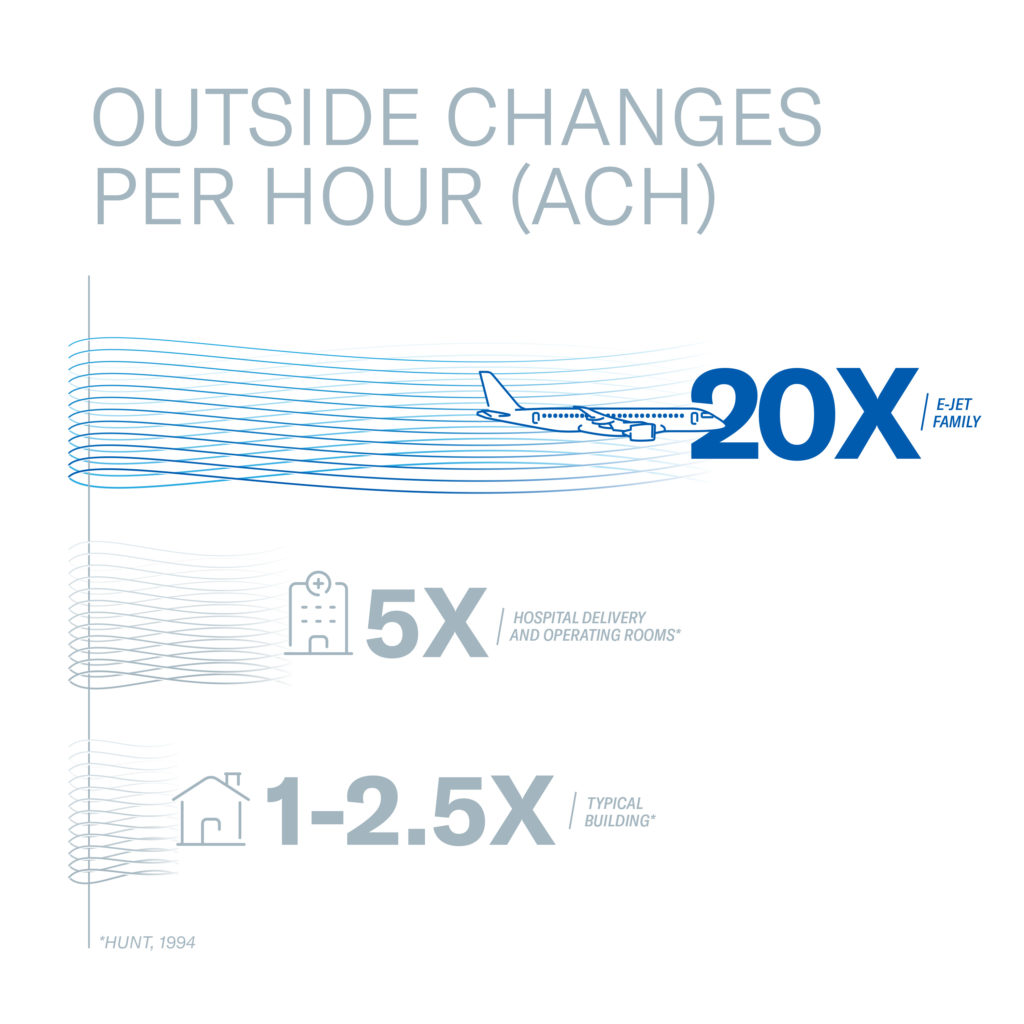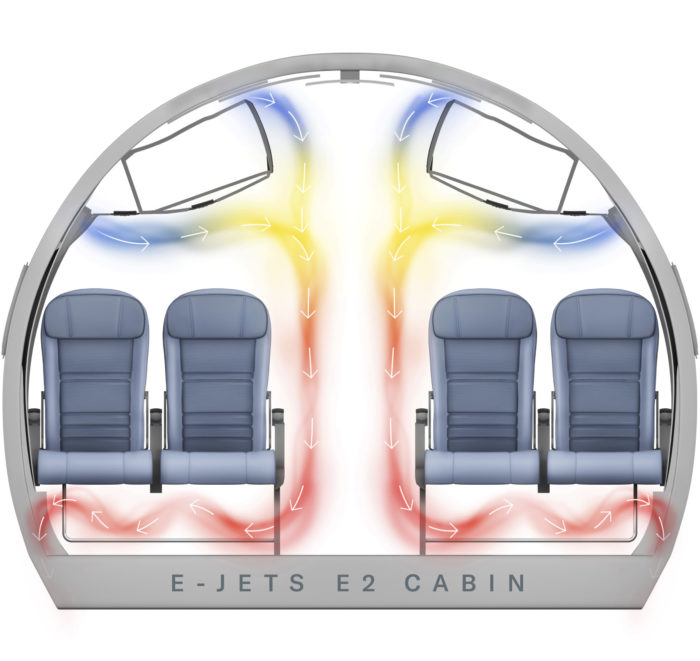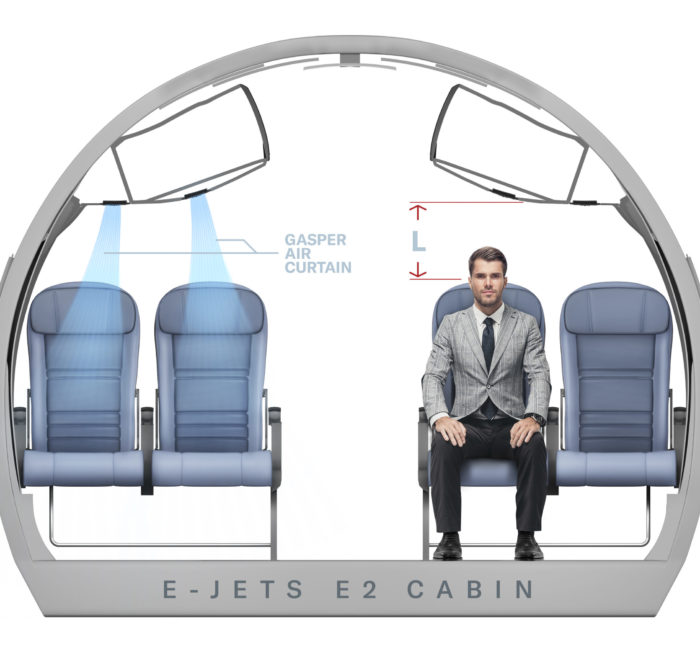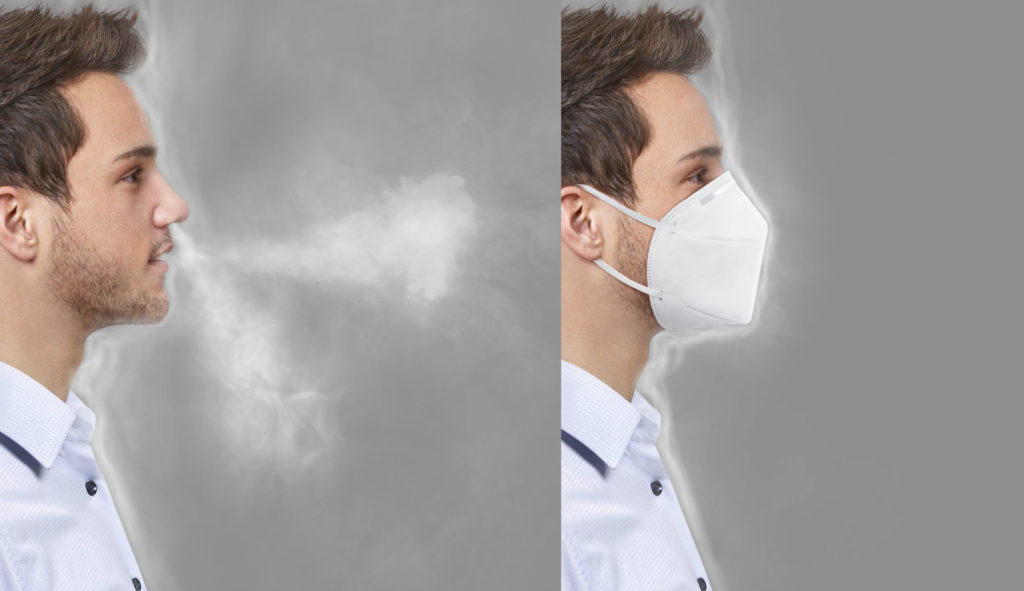No one likes flying in a middle seat. Before, an empty one represented the luxury of extra personal space. Today, it’s seen as a critical buffer zone between passengers concerned about the spread of airborne bio-contaminants in the cabin. Airlines are addressing traveller anxiety by keeping adjacent seats vacant.
Reducing the number of seats carriers can sell on an aircraft, of course, impacts the economics of the flight, as IATA estimated in a recent press release. Ticket prices would need to rise to cover operating costs. Are fewer available seats and more expensive travel the only solution?
The Air You Breathe
The rationale for keeping the same safe distance on an airplane as you would on the ground is understandable. Yet it may surprise you to learn that cabin air circulation and ventilation are carefully engineered to disperse and re-direct contaminants. In fact, most aircraft exchange their entire volume of cabin air 20 to 30 times more frequently than the air in an office, and 5 to 6 times more than hospitals.

Go with the Flow
The air in an Embraer E-Jet cabin is completely refreshed at least 20 times every hour. The air circulates through strategically placed vents and upper and lower air inlets around the overhead bins.
We conducted a series of CFD (Computational Fluid Dynamics) tests and simulations of cabin air flow years ago during development of our E-Jets. Our objective was to ensure that airborne contaminants were effectively directed away from passengers by minimizing the number of axial flow components. In other words, droplets, like those generated by talking, coughing, and sneezing, are dispersed vertically and channelled away from other passengers as much as possible.

We found that the correct positioning of the PSU gaspers in relation to a person’s head, and the resulting airflow, creates a kind of air curtain, or air barrier. The cone-shaped flow pattern from the gasper directs particles to air return grills located near the cabin floor. This minimizes cross-contamination between rows although the seat banks themselves serve as natural blocks to exhaled droplets. Forward-facing seats also minimize direct face-to-face passenger interaction.
It’s why we’re recommending passengers turn the nozzle on the gasper so that they always have a steady stream of air directed at their seat area.

Onboard HEPA Filters
Did you know that the most common droplets that people expel are between 4 and 8 microns in size? The heavier ones fall close by and collect on surfaces, like seats and clothing. The smaller ones, however, can remain suspended. Aircraft-grade HEPA filters, like those on every E-Jet, are extremely efficient. In fact, they’re 99.97% effective in trapping airborne particles and other bio-contaminants as small as 0.3 microns.
Onboard Physical Distancing?
Selling only half or two-thirds of available seats doesn’t make for good economics when there are several initiatives to ensure passenger safety and aircraft sanitation already in effect. In addition to environmental control systems that manage contaminant dispersal, airlines have adopted new rigorous cleaning policies for cabin surfaces and fixtures. Many carriers now require passengers and crew to wear face masks. They’re also restricting cabin movements, such as trolley service, that disturb air flow and could spread airborne particles.
Yet the risk of infection on an airplane remains extremely low. Even during the SARS outbreak in 2003 when these additional hygiene measures weren’t in place, there were no recorded cases of viral transmission between passengers.

Pre-Empting the Risk
The key to restoring consumer confidence, keeping ticket prices affordable, and ensuring the in-flight health of everyone lies with new technology at airports that will determine a passenger’s fitness to travel before approaching the check-in counter. Airlines, namely Etihad, and airports, like Hong Kong, Dubai, and Abu Dhabi, already have sterilization devices and testing procedures in place.
Click here to read the report from IATA on the impact of onboard physical distancing.

